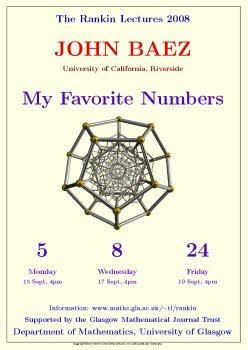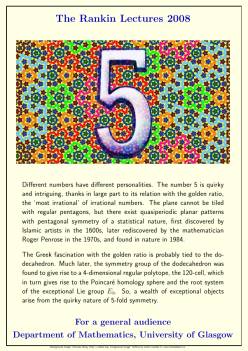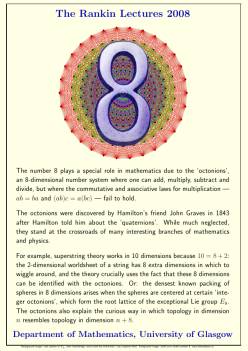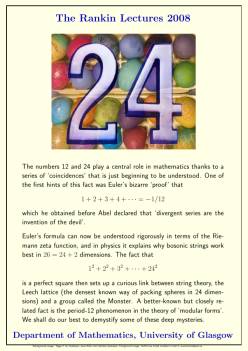|
The number 8 plays a special role in mathematics due to the "octonions", an
8-dimensional number system where one can add, multiply, subtract
and divide, but where the
commutative and associative laws for multiplication —
ab = ba and (ab)c = a(bc) — fail to hold.
The octonions were discovered by Hamilton's friend John Graves in
1843 after Hamilton told him about the "quaternions". While much
neglected, they stand at the crossroads of many interesting
branches of mathematics and physics.
For example, superstring theory works in 10 dimensions because 10
= 8+2: the 2-dimensional worldsheet of a string has 8 extra
dimensions in which to wiggle around, and the theory crucially
uses the fact that these 8 dimensions can be identified with the
octonions. Or: the densest known packing of spheres in 8
dimensions arises when the spheres are centered at certain
"integer octonions", which form the root lattice of the
exceptional Lie group E8. The octonions also explain
the curious way in which topology in dimension n resembles
topology in dimension n+8.
| 


